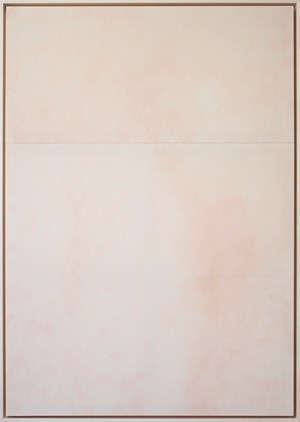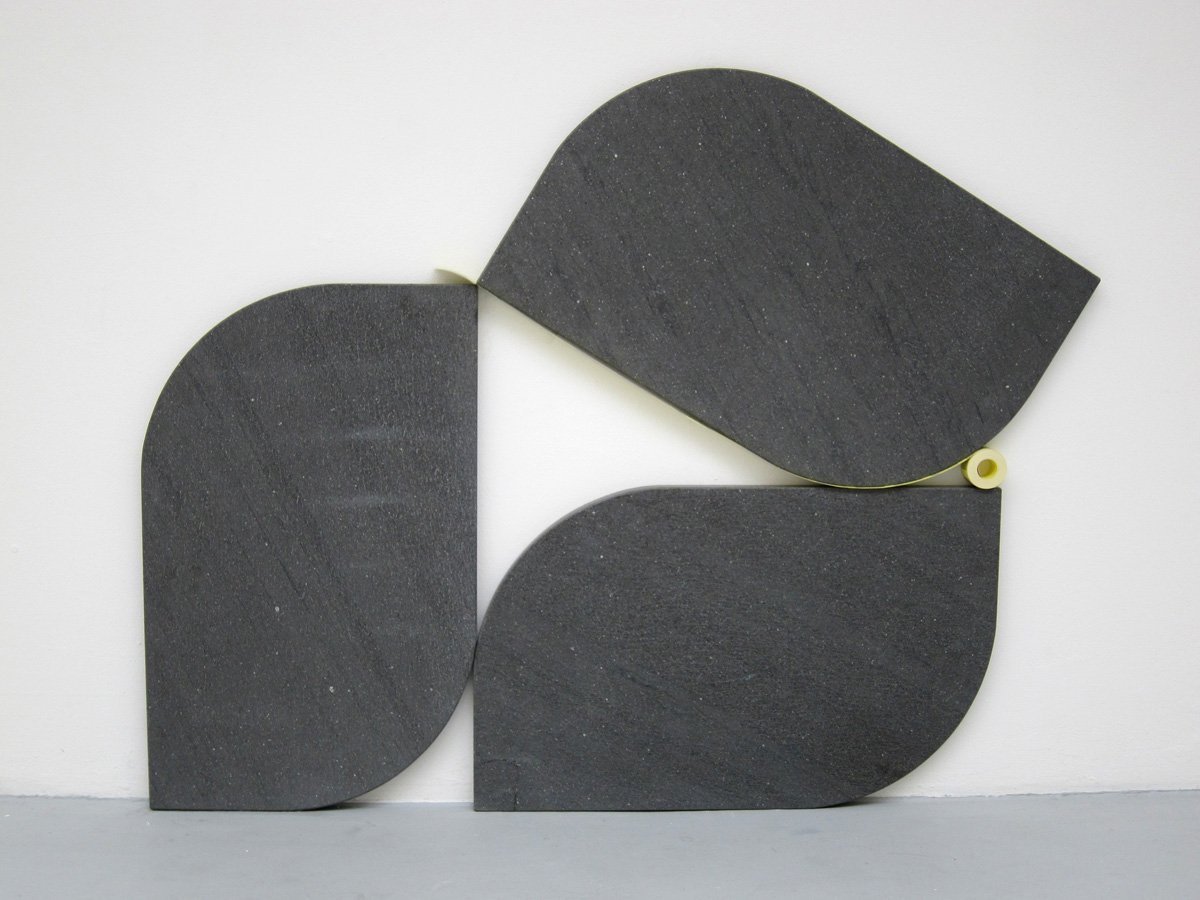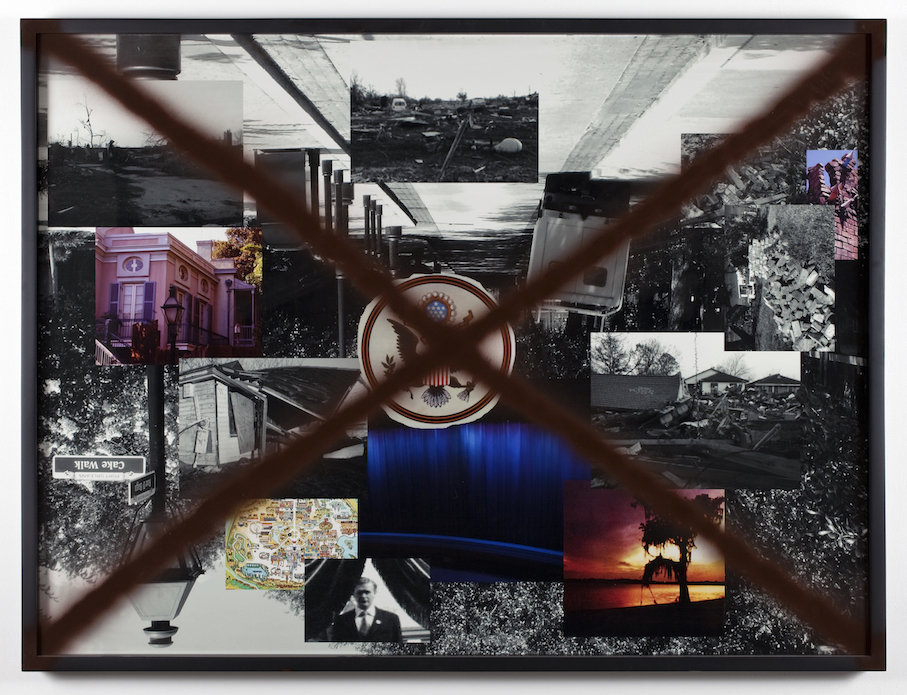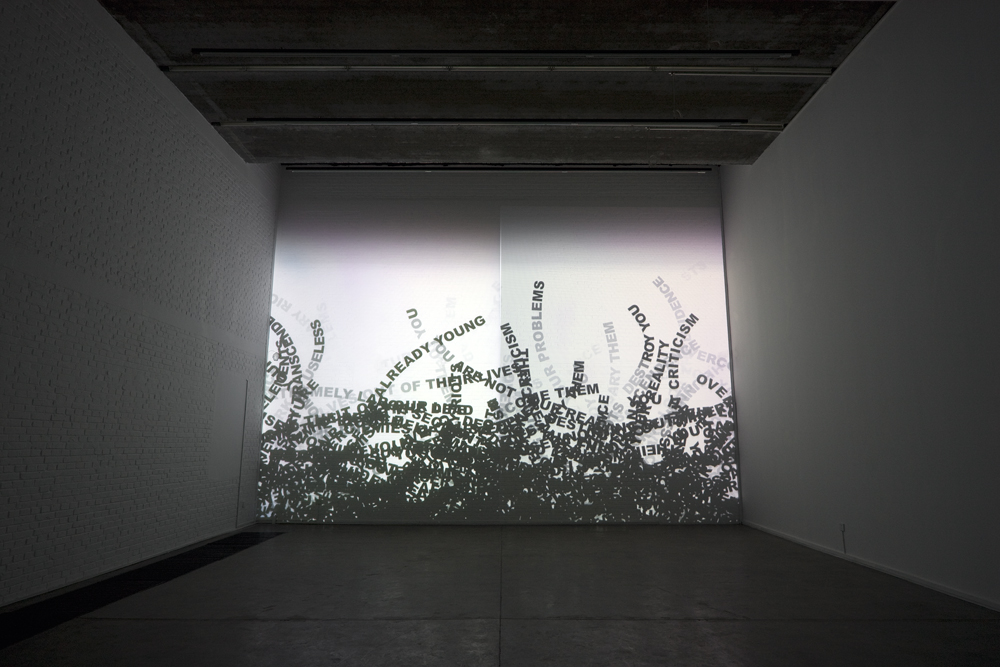Tribute to Inside Looking Out - For the male artists along my way
2008 - Film & Video (Film & Video)
Wong Wai Yin
In this work the artist stages a humorously violent “intervention” against male-dominated cultures of art production in present-day China. For this video, Wong accompanied six male friends from art school to a group show of their work titled “Inside Looking Out” at Osage Gallery in Beijing. Throughout her visit, she was rarely acknowledged for her own creative accomplishments and was more frequently introduced as an artist’s girlfriend, and often without name. Although inspired by Conceptual art of the 1960s, Wong had never considered her prior work to be in conversation with Feminist Art. Her encounters in Beijing, however, compelled her to address her experience of gendered erasure and discrimination. In her black and white video, Wong stands off camera with a metal stool in hand. As the six artists from the “Inside Looking Out” show appear on screen, Wong hits each one on the head with the stool, provoking winces and laughs from her “victims.” Wong makes it clear that the artists are willing participants, and their laughter and over exaggerated expressions of pain signal that they are “in” on the joke. But Wong’s slapstick violence here is for more than parodic effect, and in staging these violent interventions in miniature, she signals the need for a decisive rupture against art world patriarchies that foreclose opportunities for female and non-binary artists.
Wong Wai Yin is an interdisciplinary artist who experiments with a variety of media ranging from painting, sculpture, collage, performance, video, installations and photography. Taking fragments of her daily life as a point of departure, Wong has transformed these familiar and seemingly humdrum activities into something wanton, witty, and whimsical. By treating the ordinary work with unsurprising indifference, yet interwoven with humour that is playful, irresponsible, and capricious, her work blurs the presumed boundaries between gallery-exhibited art and daily life. Her performance or action-based video works in particular are reminiscent of the conceptual art of the 1960s that questioned the process of making art with elements of chance. Wong’s early artistic training in Hong Kong was focused on traditional Western European studio practices and mediums but she has since been trying to unlearn these conventional means of art making. She has since shifted to a performative and conceptual approach in her work that often stems from autobiographical experiences, episodic memories and playful interventions with art history.
Colors:
Other related works, blended automatically

© » KADIST
Wong Wai Yin
2021Drawn from the widely circulated images of protests around the world in support of women rights and racial equality, the phrase I can’t believe we are still protesting is both the title of Wong Wai Yin’s photographic series and a reference to similar messages seen on protest signages...

© » KADIST
Bjorn Copeland
2009Sign #1 , Sign #2 , Sign #3 were included in “Found Object Assembly”, Copeland’s 2009 solo show at Jack Hanley Gallery, San Francisco...

© » KADIST
Hank Willis Thomas
2012Thomas’ lenticular text-based works require viewers to shift positions as they view them in order to fully absorb their content...

© » KADIST
Hank Willis Thomas
2012Intentionally Left Blanc alludes to the technical process of its own (non)production; a procedure known as retro-reflective screen printing in which the image is only fully brought to life through its exposure to flash lighting...

© » KADIST
Carlos Amorales
2005Produced on the occasion of an exhibition at ARTIUM of Alava, Basque Centre-Museum of Contemporary Art, this deck of cards is a selection of images from Carlos Amorales’s Liquid Archive...

© » KADIST
Simon Fujiwara
2016Masks is a series of abstract paintings by Simon Fujiwara that together form a giant, fragmented portrait of German Chancellor Angela Merkel’s face...

© » KADIST
Gabriel Kuri
2010Gabriel Kuri has created a series of works in which he juxtaposes perennial and ephemeral materials...

© » KADIST
Hank Willis Thomas
2012Bread and Roses takes its name from a phrase famously used on picket signs and immortalized by the poet James Oppenheim in 1911...

© » KADIST
Hank Willis Thomas
2014South Africa Righteous Space by Hank Willis Thomas is concerned with history and identity, with the way race and ‘blackness’ has not only been informed but deliberately shaped and constructed by various forces – first through colonialism and slavery, and more recently through mass media and advertising – and reminds us of the financial and economic stakes that have always been involved in representations of race....

© » KADIST
Kwan Sheung Chi
2012Kwan Sheung Chi’s work One Million is a video work depicting the counting of bills...

© » KADIST
Choi Jeong-Hwa
2008The application of bright colors and kitsch materials in Flower Tree manifests a playful comment on the influence of popular culture and urban lifestyle...

© » KADIST
Stephen G. Rhodes
2010For his series of digital collages Excerpt (Sealed)… Rhodes appropriated multiple images from mass media and then sprayed an X on top of their glass and frame...

© » KADIST
Hank Willis Thomas
2012Like many of his other sculptural works, the source of I am the Greatest is actually a historical photograph of an identical button pin from the 1960s...







